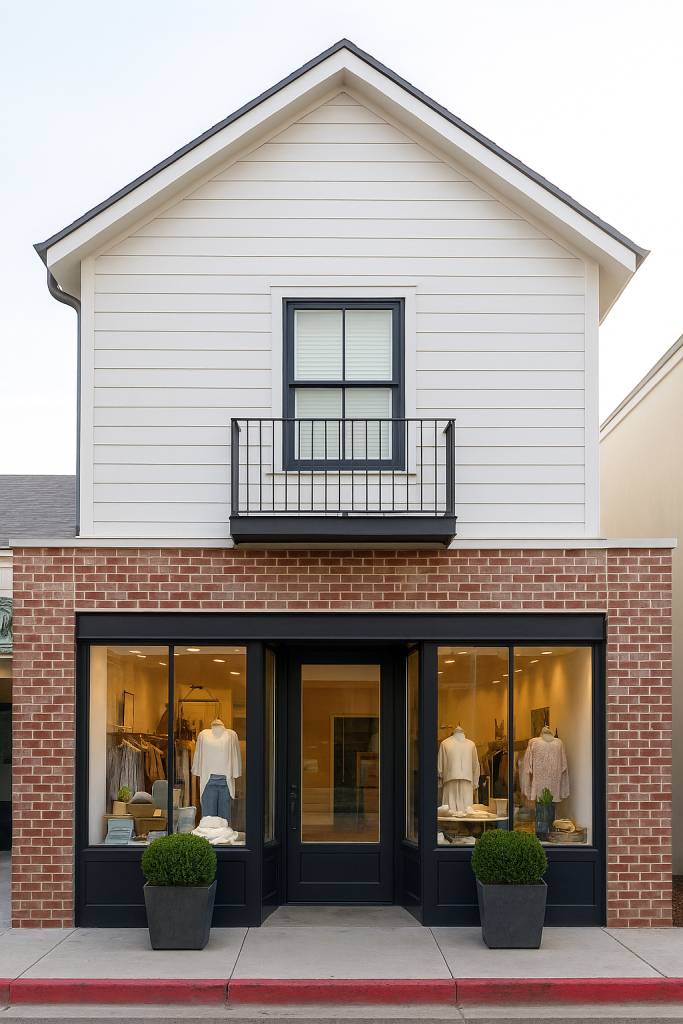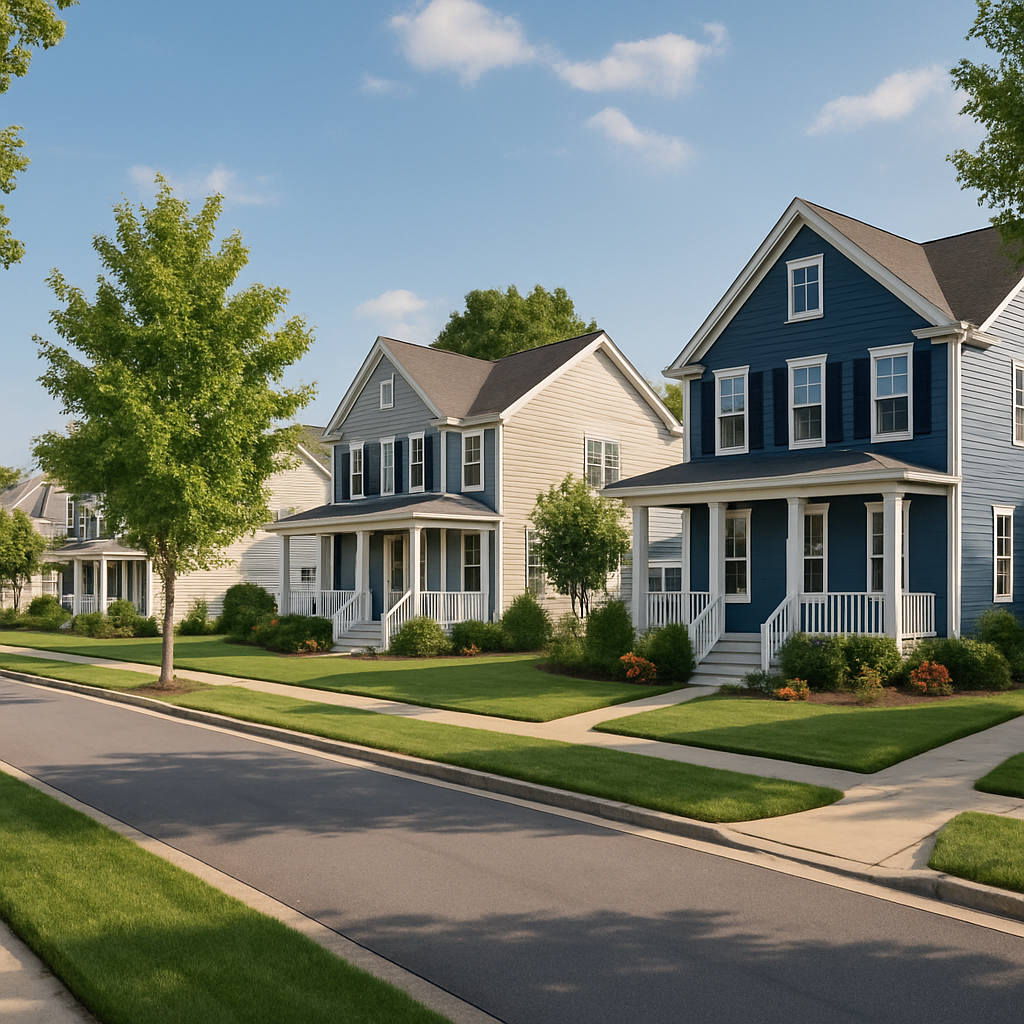The History of Myrtle Beach: From Native Lands to Tourist Paradise
Nestled along South Carolina’s Atlantic coastline, Myrtle Beach has transformed from a quiet stretch of pristine shoreline into one of America’s most beloved vacation destinations. For those thinking of moving to Myrtle Beach, whether buying or building a home, they are likely aware that the Grand Strand is one of the most popular destinations in the country. This coastal city’s journey spans centuries, weaving together stories of indigenous peoples, early settlers, visionary developers, and the millions of visitors who have fallen in love with its sandy shores.
The Indigenous Beginning
Long before European colonization, the area that would become Myrtle Beach was inhabited by Native American tribes, primarily the Waccamaw and Winyah peoples. These indigenous communities thrived along the coastal plains, utilizing the abundant natural resources of the region. They established settlements near rivers and marshes, living off the rich bounty of fish, shellfish, game, and native plants. Archaeological evidence suggests continuous habitation of the area for thousands of years, with these tribes developing sophisticated knowledge of seasonal patterns and sustainable resource management.
The Native Americans left their mark on the landscape through place names that persist today. The Waccamaw River, which flows through the region, bears the name of one of these original inhabitants. Their understanding of the coastal ecosystem and weather patterns would later prove invaluable to European settlers attempting to establish their own communities in this challenging environment.
Colonial Era and Early Settlement
European exploration of the South Carolina coast began in the early 16th century, but permanent settlement in the Myrtle Beach area didn’t occur until much later. The region remained largely undeveloped through the colonial period, serving primarily as hunting and fishing grounds for scattered settlers from the more established inland plantations.
During the 18th and early 19th centuries, the area was known for its dense forests of longleaf pine and live oak, which provided valuable timber resources. Small communities of loggers, fishermen, and subsistence farmers began to establish themselves along the coast. The isolation of the area, while challenging for permanent settlement, also provided a degree of protection during various conflicts, including the Revolutionary War and the War of 1812.
Rice and indigo plantations dominated the broader coastal region during this period, though the sandy soils directly along the coast proved less suitable for large-scale agriculture. Instead, the area’s economy relied heavily on its maritime resources, with fishing and small-scale shipping operations supporting local communities.
The Railroad Revolution
The transformation of Myrtle Beach from an isolated coastal area to an accessible destination began in the late 19th century with the arrival of the railroad. The Wilmington and Manchester Railroad, later part of the Atlantic Coast Line Railroad, extended service to the area in the 1900s. This crucial transportation link opened up possibilities that had never existed before, connecting the coast to inland cities and making the area accessible to visitors and investors.
The railroad’s arrival coincided with a growing national interest in seaside resorts and the health benefits of ocean air. Wealthy families from the Carolinas and beyond began to see the pristine beaches as potential retreat locations, leading to the first serious discussions about developing the area for tourism.
Birth of a Resort Town
The true founding of Myrtle Beach as a resort destination can be traced to the early 20th century and the vision of Franklin Burroughs and his associates. Burroughs, a successful businessman from Conway, South Carolina, recognized the potential of the pristine coastline and began purchasing large tracts of land in the area.
In 1901, Burroughs established the Myrtle Beach Development Company and began the systematic development of what would become the resort city. The name “Myrtle Beach” itself comes from the abundance of southern wax myrtle trees that grew naturally in the area. These hardy, salt-tolerant plants covered much of the coastal landscape and provided the perfect inspiration for the community’s name.
The first major development was the Seaside Inn, which opened in 1901 and served as the area’s premier accommodation for early visitors. This modest but elegant hotel established Myrtle Beach’s reputation as a destination for refined leisure and relaxation. The inn featured traditional Southern hospitality combined with the novelty of beachfront access, a combination that proved irresistible to early tourists.
The Pavilion Era
The 1920s marked a crucial period in Myrtle Beach’s development with the construction of the famous Myrtle Beach Pavilion in 1923. This iconic structure became the heart of the community’s entertainment and social life, hosting dances, concerts, and community events that drew visitors from across the region.
The Pavilion represented more than just an entertainment venue; it symbolized Myrtle Beach’s commitment to providing wholesome, family-friendly recreation. The structure’s distinctive architecture, featuring a large dance floor and surrounding arcades, became synonymous with the Myrtle Beach experience. Big band performances during the 1930s and 1940s established the Pavilion as a premier entertainment destination along the Eastern seaboard.
During this era, the development of Ocean Boulevard began in earnest, creating the scenic coastal drive that remains central to the Myrtle Beach experience today. Small hotels, guesthouses, and restaurants began appearing along this route, establishing the foundation for the tourism infrastructure that would later expand dramatically.
World War II and Its Aftermath
World War II brought significant changes to Myrtle Beach, as it did to coastal communities throughout America. The area’s strategic location made it important for coastal defense, and military installations were established in the region. The Myrtle Beach Army Air Field was constructed, bringing military personnel and their families to the area and providing an economic boost during the war years.
The end of the war ushered in an era of unprecedented growth and prosperity for Myrtle Beach. Returning servicemen and the post-war economic boom created a perfect storm for tourism expansion. The rise of automobile travel and the development of better road networks made the beach more accessible than ever before. Families who had previously relied on train travel could now drive to Myrtle Beach, bringing their own cars and staying for longer periods.
During the 1950s, the area began to develop its reputation as an affordable family vacation destination. Unlike some of the more exclusive resort communities along the Eastern coast, Myrtle Beach positioned itself as accessible to middle-class families, offering reasonable accommodations and entertainment options that appealed to a broad demographic.
Golf Course’s and Their Effect on the Area
The 1960s and 1970s witnessed Myrtle Beach’s evolution into a golf destination of international renown. The area’s favorable climate, suitable terrain, and growing tourism infrastructure made it an ideal location for golf course development. Robert Trent Jones Sr. and other renowned golf course architects began designing courses that took advantage of the area’s natural beauty while providing challenging play for golfers of all skill levels.
The development of Pine Lakes International Country Club, often called the “Granddaddy” of Myrtle Beach golf courses, established the area’s credentials as a serious golf destination. This was followed by a steady stream of new courses, each adding to the area’s reputation and drawing golf enthusiasts from around the world.
By the 1980s, Myrtle Beach had earned the nickname “Golf Capital of the World,” boasting more golf courses per square mile than any other destination. This designation transformed the area’s tourism profile, extending the traditional summer beach season into a year-round destination for golf travelers.
Entertainment and Attractions Solidifying Myrtle Beach as a Family Destination
The 1980s and 1990s saw an explosion of entertainment options that expanded Myrtle Beach’s appeal beyond just sun, sand, and golf. The development of dinner theaters, music shows, and family attractions created a diverse entertainment landscape that could accommodate visitors with varying interests and age groups.
The Carolina Opry, opened in 1986, pioneered the area’s live entertainment scene and established Myrtle Beach as a destination for music lovers. This was followed by numerous other music venues, magic shows, and variety theaters that created a miniature version of Branson, Missouri, on the South Carolina coast.
Family attractions proliferated during this period, including water parks, miniature golf courses, and amusement rides along the Grand Strand. The development of Broadway at the Beach in the 1990s created a central entertainment and shopping complex that anchored the area’s attraction offerings and provided a focal point for visitor activities beyond the beach itself.
Modern Development and Challenges
The turn of the 21st century brought both tremendous growth and new challenges to Myrtle Beach. The area’s popularity led to rapid development, transforming the skyline with high-rise condominiums, luxury resorts, and expanded commercial districts. This growth brought economic prosperity but also raised concerns about environmental impact and infrastructure capacity.
Hurricane Hugo in 1989 and other severe weather events highlighted the area’s vulnerability to natural disasters, leading to improved building codes and emergency preparedness measures. The community learned to balance development with environmental stewardship, implementing dune protection programs and sustainable tourism practices.
The demolition of the beloved Pavilion in 2006 marked the end of an era and sparked community discussions about preserving the area’s historical character while accommodating modern development needs. The site was redeveloped as a public park, maintaining public access to this historically significant location.
The Grand Strand Today
Modern Myrtle Beach encompasses much more than the original resort community, extending along what is known as the Grand Strand—a 60-mile stretch of pristine coastline that includes numerous communities from Little River to Georgetown. This expanded area offers diverse experiences, from the family-friendly attractions of central Myrtle Beach to the more upscale amenities of nearby communities.
Today’s Myrtle Beach welcomes over 17 million visitors annually, making it one of the most popular beach destinations on the East Coast. The area has successfully diversified its economy beyond tourism, attracting retirees, businesses, and permanent residents who appreciate the coastal lifestyle and economic opportunities.
The city has invested heavily in infrastructure improvements, including the Myrtle Beach International Airport expansion, improved roadways, and enhanced public facilities. These improvements support both the tourism industry and the growing permanent population, creating a more sustainable foundation for future growth.
Cultural Heritage and Preservation
As Myrtle Beach continues to evolve, efforts to preserve and celebrate its cultural heritage have gained prominence. The area’s Gullah-Geechee culture, representing the traditions of enslaved Africans and their descendants in the coastal regions, is increasingly recognized and celebrated as an integral part of the region’s history.
Local historical societies and preservation groups work to maintain important landmarks and educate visitors about the area’s rich past. The Myrtle Beach area has embraced its role as a keeper of coastal Carolina traditions while continuing to welcome new influences and innovations.
Looking Forward
Myrtle Beach’s history demonstrates the successful evolution of a small coastal community into a major destination resort while maintaining its essential character and appeal. The area continues to adapt to changing visitor preferences, technological advances, and environmental challenges while preserving the natural beauty and welcoming atmosphere that first attracted visitors over a century ago.
As climate change and sea level rise present new challenges for coastal communities, Myrtle Beach is actively engaged in planning for a sustainable future. The community’s history of adaptation and resilience provides a strong foundation for meeting these challenges while continuing to offer memorable experiences for future generations of visitors.
The story of Myrtle Beach reflects broader themes in American history—the displacement of indigenous peoples, the impact of transportation on development, the rise of leisure travel, and the ongoing challenge of balancing growth with environmental protection. It stands as a testament to the vision of early developers, the hard work of countless individuals, and the enduring appeal of sun, sand, and Southern hospitality.
From its beginnings as hunting grounds for Native American tribes to its current status as an international resort destination, Myrtle Beach has maintained its essential identity as a place where people come to relax, have fun, and create lasting memories. This continuity of purpose, spanning more than a century of dramatic change, may be the most remarkable aspect of the Myrtle Beach story. From its beginnings as hunting grounds for Native American tribes to its current status as an international resort destination, Myrtle Beach has maintained its essential identity as a place where people come to relax, have fun, and create lasting memories. This continuity of purpose, spanning more than a century of dramatic change, may be the most remarkable aspect of the Myrtle Beach story.
For more information on Myrtle Beach, Check out these resources: Myrtle Beach Chamber of Commerce and Myrtle Beach Regional Economic Development Corp. If you would like info on Myrtle Beach Real Estate, Click here.







